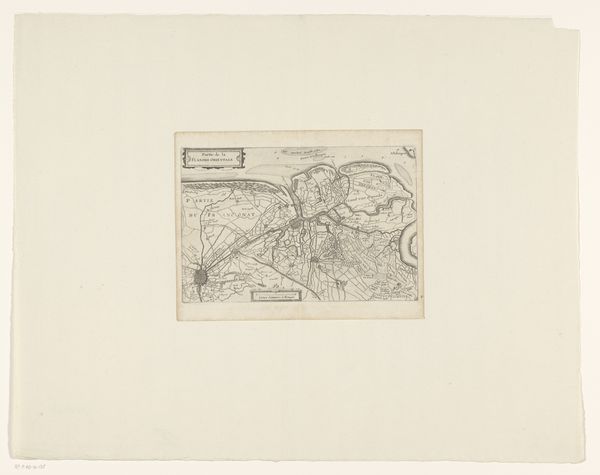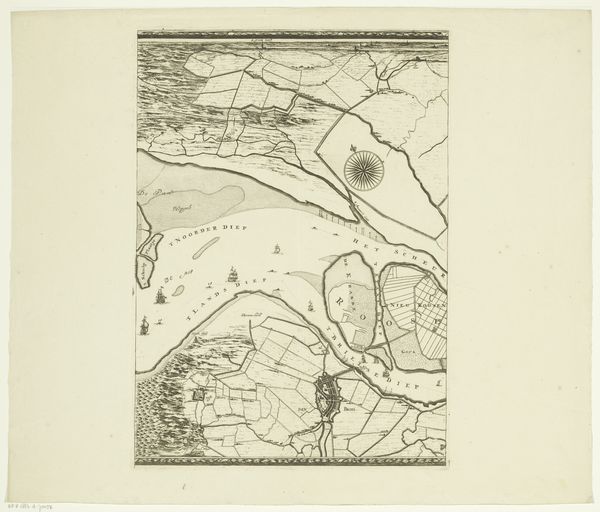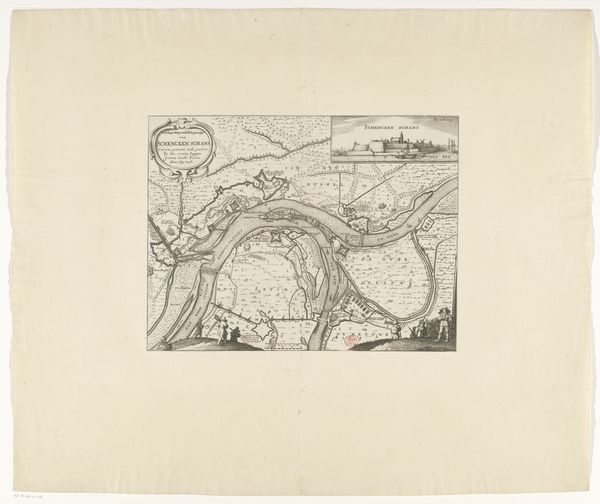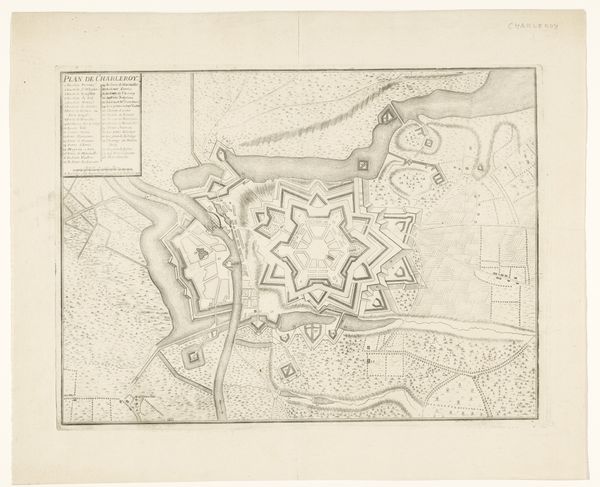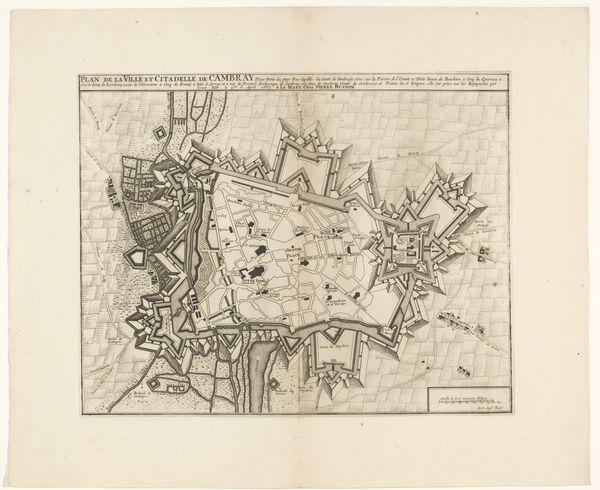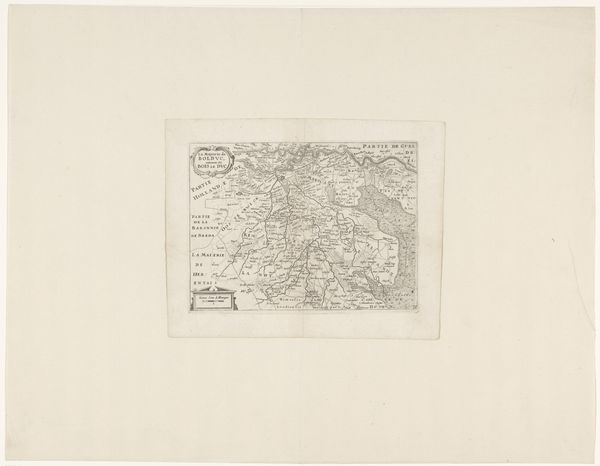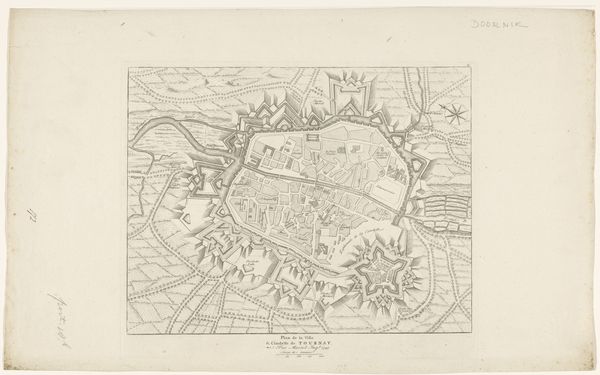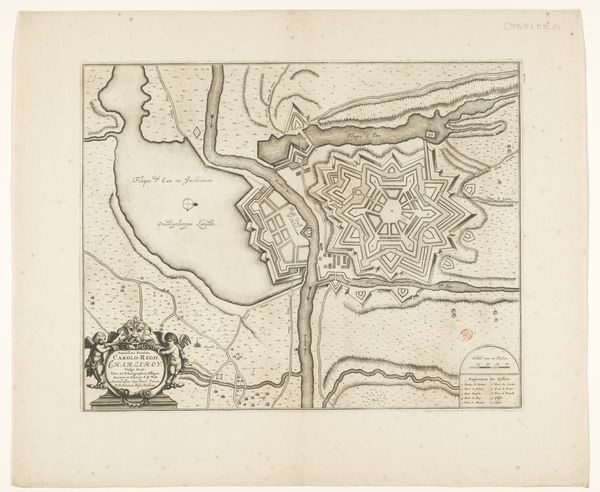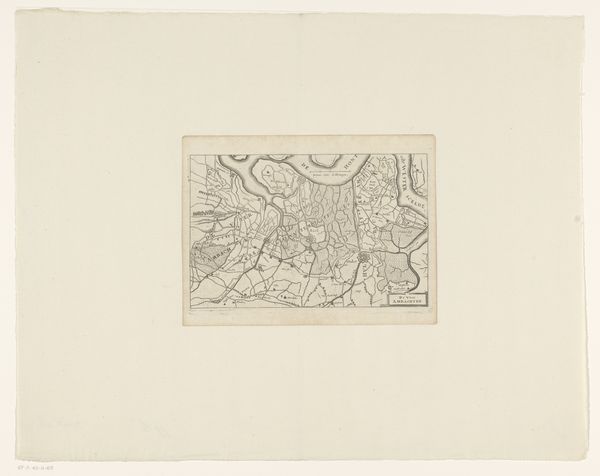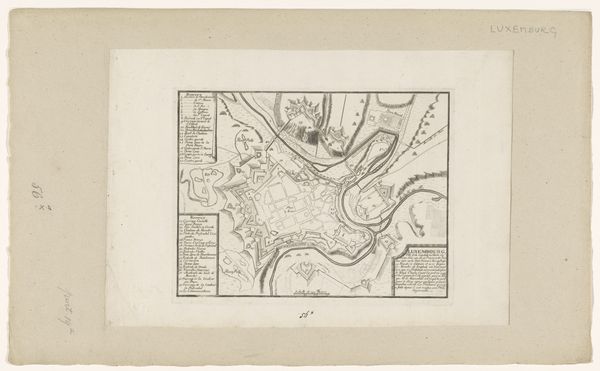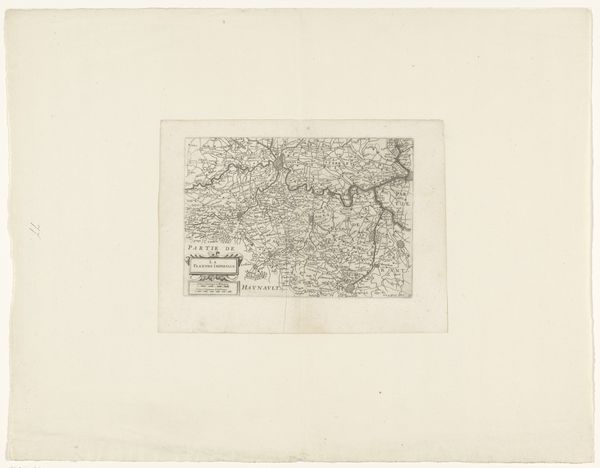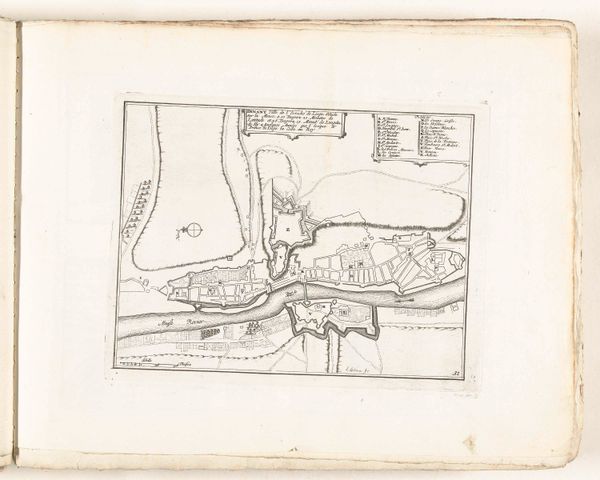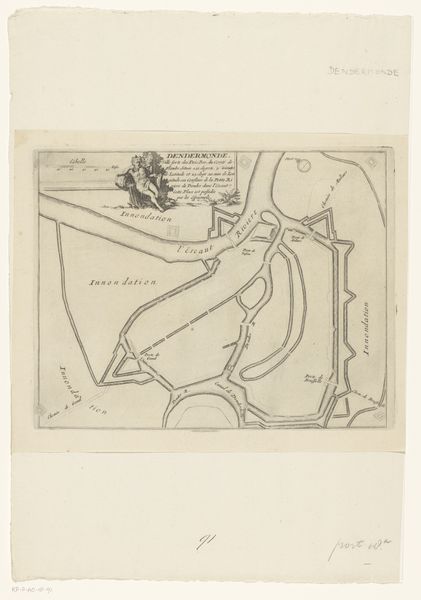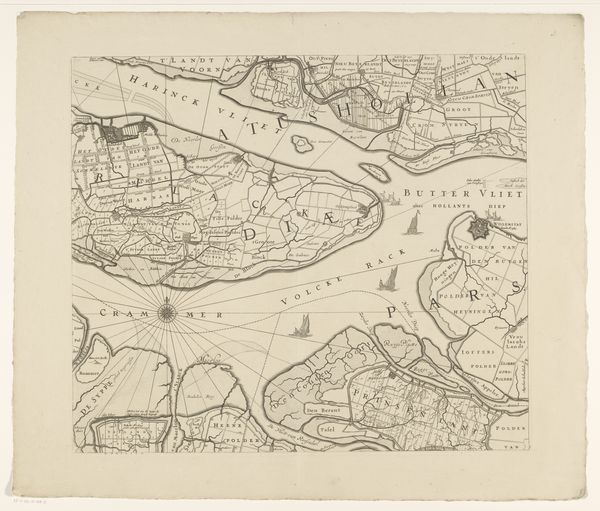
drawing, print, etching, paper, ink
#
drawing
#
baroque
# print
#
etching
#
paper
#
ink
#
linocut print
#
geometric
#
cityscape
Dimensions: height 164 mm, width 195 mm
Copyright: Rijks Museum: Open Domain
Curator: Before us is "Vestingplattegrond van Luxemburg," a fascinating anonymous drawing and etching on paper and ink from sometime between 1695 and 1711. Editor: It has a stark, almost sterile beauty, wouldn’t you say? All those precisely rendered lines—it’s beautiful and unsettling at the same time. It’s as if it embodies power and control in such geometric representation. Curator: The geometrical qualities are indeed prominent, defining the structure of the cityscape itself. Look closely, and the rigid lines define fortifications, streets, and even what looks like waterways, revealing a very calculated approach to urban planning. We see an architectural language where lines are employed as strategic indicators for dominance. Editor: Absolutely, and while admiring the artistic choices, one must acknowledge its historical purpose, to claim ownership through documentation, right? Think of the implications—the lines delineate boundaries, property, and, ultimately, colonial power. Doesn't that sterile precision seem like a declaration of intended control? Curator: The cool and objective visual style certainly conveys a desire for accuracy, focusing on form rather than subjective expression. Consider, however, that the rendering emphasizes function, prioritizing effective communication and organization above mere visual aesthetic, as form follows function here. Editor: I do appreciate the technical skill and, I must admit, am intrigued by the cityscape's historical footprint, its evolution. One question I ponder over, though, is for whom were these etchings produced and consumed? They’d definitely convey something beyond just a survey, considering the context of colonial rivalries playing out at that moment. Curator: Undoubtedly, its use then probably had very restricted purposes that escape our gaze today, with aesthetic experience being way beyond the primary scope for such renderings. In a contemporary context, such works invite analysis of representation. They allow for understanding how lines form power relations, and I welcome them from an abstract viewpoint that supersedes all political purposes they might have served. Editor: Well said. And from a modern critical viewpoint, “Vestingplattegrond van Luxemburg" challenges us to examine how these images might act as documents and expressions of past inequities and the formal qualities they carry. Curator: A stimulating thought that leaves us much to consider on how structure and historical context come together.
Comments
No comments
Be the first to comment and join the conversation on the ultimate creative platform.
